Icy Inverts Cruise 2013 - Shipboard Blog - Dec 07th to Dec 09th
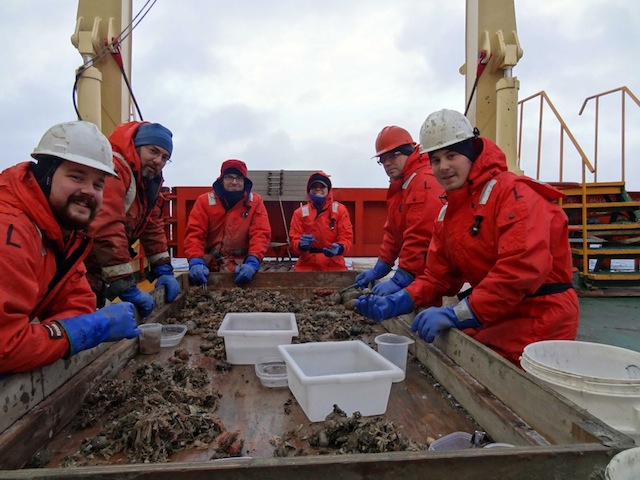
09 Dec 2013 - Gerlache Straits (64o 38.1`S 62o 51.3`W)
Despite working from midnight to noon, it’s a bit incorrect to call our team “the night shift” because there is hardly any night to speak of! At the start our shift the sun just barely sits below the horizon, and the sky stays crepuscular for a several hours before rosy-fingered dawn appears and highlights the mountains and icebergs from oblique angles. Beauty is its own reward for staying up all night as our team converges on the trawl and we “ooh” and “ahh” over both the animals brought up from depths and the sun-dappled scenery (see above image).
We have just left a convergence zone of several currents in an area called the Bransfield Straight. Here, several water masses come together including the Antarctic deep water, coastal waters, and water from the Antarctic Circumpolar Current, all of which carry tiny free floating creatures, called plankton, on their own odyssey.
One of my favorite animals found in the plankton is Clione antarctica, the sea angel (see below image). We collected this species on our last trip, but that time almost exclusively with a parasitic idler, a hyperiid amphipod, an ugly little beast that clings tightly and uses the sea angel for chemical protection. However, in the Bransfield, the sea angels collected have cast off their freeloaders and are happily swimming among many of their favorite prey item, a winged gastropod known as the sea devil, Limacina sp. (see below last image). The sea devils are visible as dark brown lumps within the pink guts of the sea angel; it makes me think the sea angels are quite satiated and happy here as they flap their wings in my petri dish!
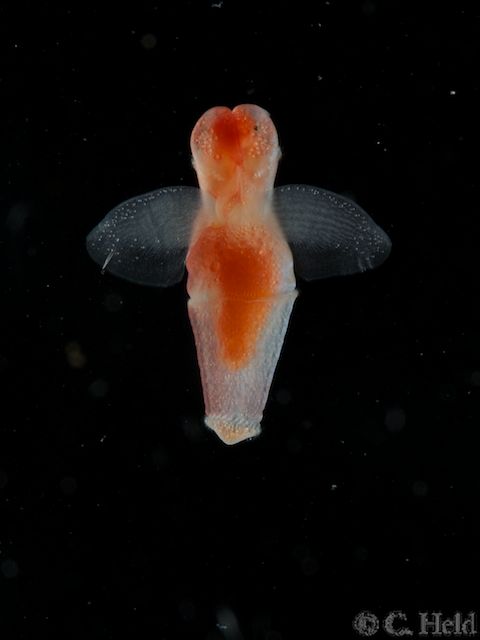
There are many creatures in the plankton that are known as larvae. These wave-faring strangers are animals that look almost nothing like their adult counterparts and spend their time in the water column feeding on phytoplankton. Eventually, a juvenile growing within will settle down to the benthos and take up a completely grounded existence. I wonder how far these larvae have traveled and hope to begin to understand that question through DNA sequencing of my favorite odd planktonic characters, the mushroom- and helmet- shaped pilidia larvae of ribbon worms. I think some of the very large pilidia collected have been on very long odysseys; maybe even a year or more traveling around the continent in its swirling currents and eddies, and maybe only Poseidon knows what trials they have passed as their little juvenile grows and feeds, protected in its larval skin from the perils of Cyclops-looking copepod predators or a run through by spikey herds of radiolarians. Other pilidia are quite small and dainty and I wonder if they are simply local drifters dispersing to nearby destinations.
Our own odyssey on the R/V Gould is beginning to wrap up and we are heading South again towards Palmer Station. The night shift has less and less pseudo-night and we will continue to enjoy converging on the trawl as we sample the fjords of the west side of the Antarctic Peninsula this week. However, more and more frequently our conversations over the sorting table turns from the animals and scenery to our own missed spouses, significant others, children, family and dear friends. Our holiday homecoming will feel extra special since we have been wayfaring for so long!
Contributed by: Dr. Megan Schwartz, University of Washington
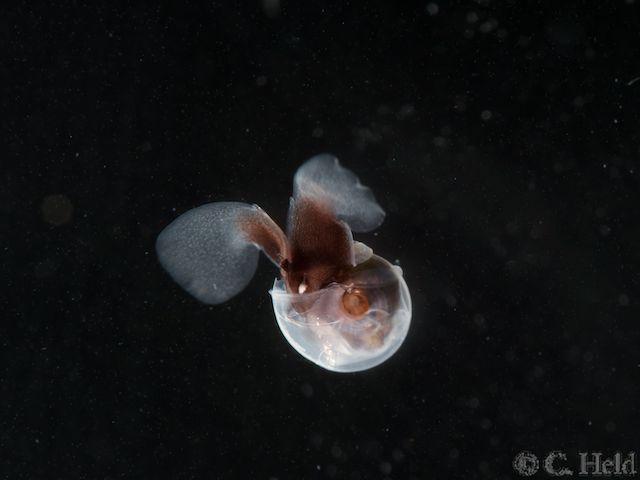
***************************************************************************************
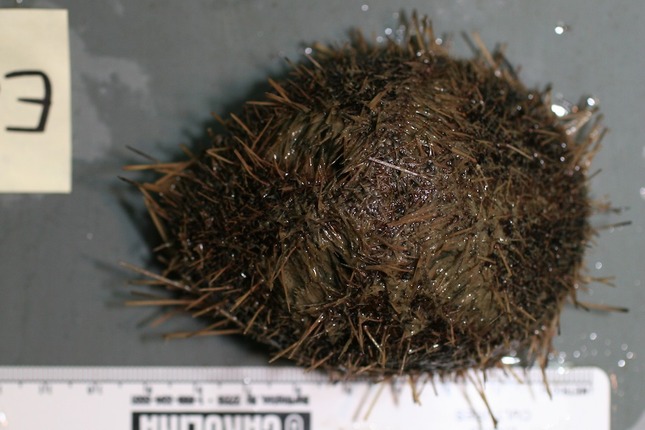
08 Dec 2013 – Near the Barrier Islands (63o 8’ S 53o 57’ W)
We are making our way back down the western side of the Antarctic Peninsula inside the barrier islands, sampling as we go. The sampling has been fast and furious and we are collecting an excellent variety if samples as well as the numbers necessary to accurately investigate our individual questions. As we continue to move south for another brief stopover at Palmer Station we will be sampling in some fjords. It will be interesting to compare the diversity of organisms we sample there versus the continental shelf sampling we’ve been doing.
Because we are here to collect invertebrates, we’ve titled this year's trips the “Icy Inverts Research Cruise”. Many of my colleagues have discussed some of their organisms of interest in previous posts and my particular organism is the urchin (see above image). Despite having widely varied interests, there is one sure way to get everybody to the same spot in record time. That’s to call ‘Whale!’. It’s kind of like saying squirrel to your dog and watching him freak out and run in circles. Everybody starts running around frantically grabbing cameras and jackets and heading to the rails. It never fails. It’s almost tempting to do it as a joke but it’s a long swim home.
The southern ocean hosts 7 species of baleen whales and 12 species of toothed whales. None stay in the southern ocean year round, they migrate to Antarctic waters in the summer months to feed and return to temperate northern waters to breed in the winter. The baleen whales have triangular plates which grow from their upper jaws that acts as a sieve, allowing them to feed on plankton in the water such as krill. The baleen whales include the blue, fin, sei, minke and the humpback. On this trip so far we’ve seen minke and humpbacks. The major toothed whales are the right, sperm, killer. We haven’t seen any of those. I’m hoping to at least see some killer whales. I was able to travel with my family to Alaska this summer and we saw humpbacks and killers and I’d like to be able to say I’ve seen them here as well.
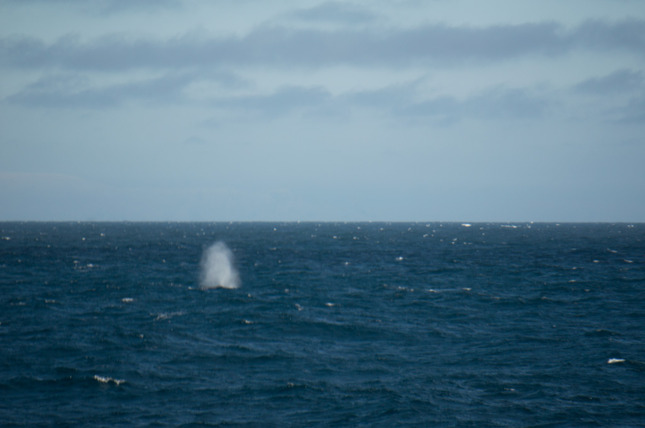
We’ve been fortunate in our whale sightings so far but as my pictures show (see above and below images), they are still pretty elusive. Most often we just see the spouts from their exhalations or a dark hump as they glide through the water and they usually keep their distance. At least the humpbacks raise their tail flukes as they dive.
A quick shoutout to Ryan McCluskey at Stormr. Can’t thank you enough for the gear.
Congratulations to the Auburn Football team for winning the SEC Championship. BCS Championship, here we come. War Eagle!!
Contributed by: David Branson, Graduate Researcher, Auburn University
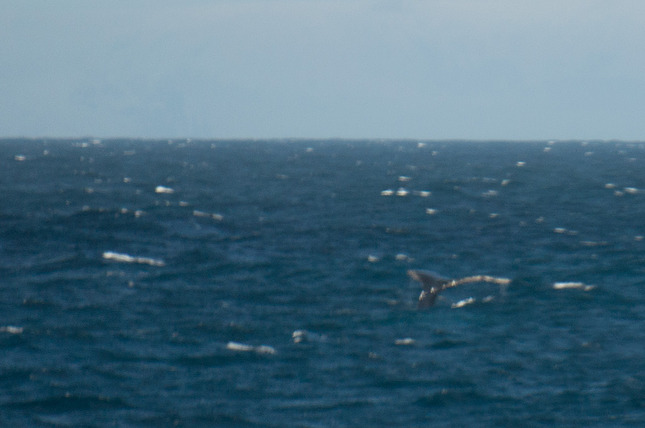
***************************************************************************************
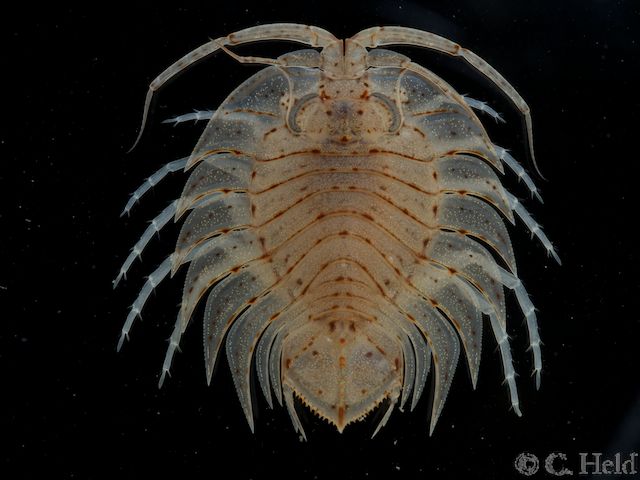
07 Dec 2013 – More interesting invertebrates (63o 8`S 53o 57`)
After many trawls and many sortings, we’ve seen that some sites are clearly dominated by certain animals. Occasionally, we’ll pull up tons and tons of Ophiuriods (brittle stars). Other times, we end up with more tunicates than we know what to do with. Ken has gone into detail about the interesting nature of these two differing sites so I’ll spare you the details. But what he didn’t talk about, and what I’d like to write a little about today, are some of the less abundant critters we also gathered from these sites.
The diversity of crustaceans we have found is remarkable. One group, Serolidae, in particular caught my eye as we were sorting (see above image). These critters are a blast from the past since they resemble trilobites, which were ancient animals that showed up in the Cambrian period. The resemblance is just a coincidence or convergent evolution. Around half of the known species of serolids are found in the Southern Ocean and a serolid was the first arthropod to be described from the Southern Ocean.
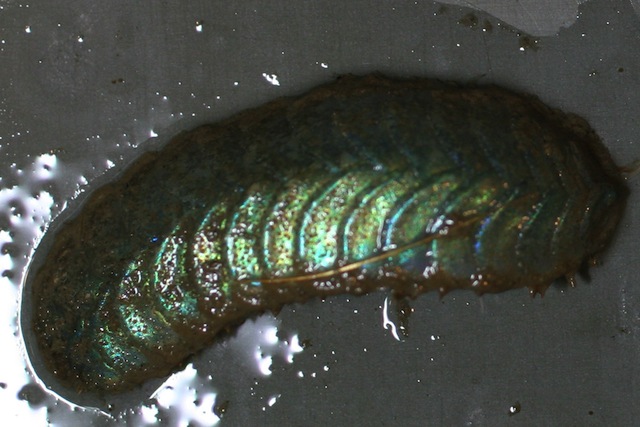
Another critter that we’ve found quite a few of are scale worms. This diverse group of polychaete worms is characterized by having scales on the dorsal side that are a form of protection from predators. The scale worms we’ve found have had all kinds of scales from iridescent (see above image) to black and white striped. These worms also have lateral chetae that can be used for locomotion; sometimes they can even be used to swim. Most that we’ve found have been small, only a few centimeters, but one species, Laetmonice producta, is a monster (see below image). These guys can get up to almost a foot in length! They’re pretty spectacular with a full set of scales. They have very large golden chetae laterally as well as very sharp (some of us have found out the hard way) dorsal rows that are angled up and back and are a very effective form of defense.
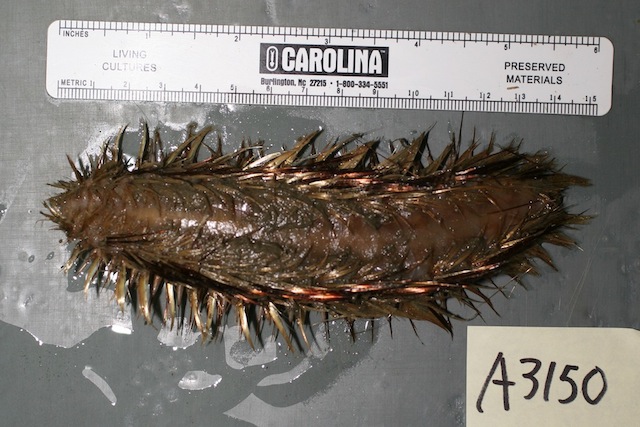
We’ve seen some incredible things so far and I can’t wait to find out what we’ll see next.
Contributed by: Damien Waits, Graduate Researcher, Auburn University
Last updated: 12/10/2013
